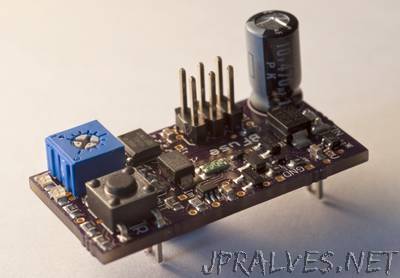
“Prototyping is a dangerous job. Not for a person if you keep the voltage down but for the components. On breadboard misplaced chips, loose connection and other errors can blow the components. To save them a fuse is a good idea. Having said that, standard fuses are not very suitable for breadboarding. Blow fuses have the inherent problem of being a one-time component. And during prototyping, a lot of overcurrent conditions can happen. A better way is to use a resettable fuse, also known as PTC. After tripping, it turns into a high-impedance state and remains tripped until the overcurrent condition is removed. But they have disadvantages too. Just like the ordinary blow fuse, the tripping time depends on how much current is passed. For example, to achieve 1 millisecond breaking time a quick blow 1-amp fuse needs to pass 10 amps. For 1-amp PTC at 10 amps, the tripping time is around 100 milliseconds. That is way too long and way too much current. Moreover, resettable fuse still leaks some current in its tripped state because it has to keep being hot.”
